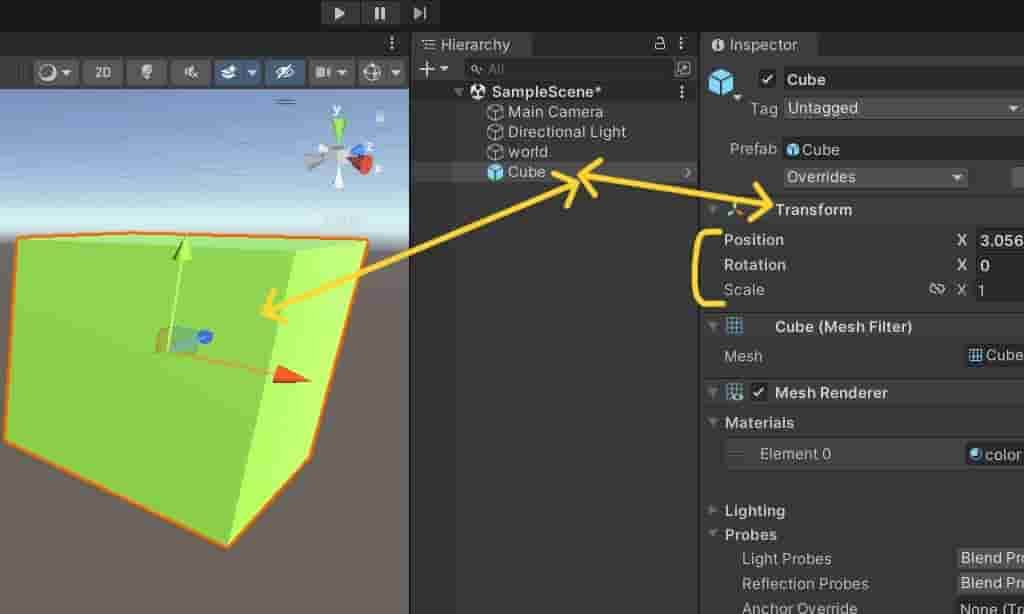There are links on this site that can be defined as affiliate links. This means that I may receive a small commission (at no cost to you) if you purchase something through the links provided on this website.
For details Click here.Introduction:
In the world of game development, Unity Engine is a powerful and widely used platform that offers a plethora of tools and features to create stunning and immersive games. One of the fundamental concepts is Understanding Object Transforms in Unity Engine. Understanding object transforms is crucial for effectively manipulating and positioning objects within a Unity scene. In this article, we will delve into the basics of object transforms, explaining what they are and how they are used in Unity.
What are object transform in Unity?
In Unity, every game object has a transform component attached to it. The transform component represents an object’s position, rotation, and scale in the game world. These three attributes together make up the object’s transform.
Position:
The position attribute determines the object’s location in the scene. It is represented by a vector, which holds three values: X, Y, and Z. The X-axis represents the left-to-right direction, the Y-axis represents the up-and-down direction, and the Z-axis represents the front-to-back direction. Modifying the position attribute allows us to move an object within the game world.
Rotation:
The rotation attribute defines the orientation of an object. It is also represented by a vector with three values, namely the Euler angles: rotation around the X-axis, rotation around the Y-axis, and rotation around the Z-axis. Manipulating the rotation attribute enables us to rotate an object while maintaining its position.
Scale:
The scale attribute determines the size of an object. you can use a vector to represent it with three values representing the scaling factor for each axis: X, Y, and Z. Altering the scale attribute allows us to resize the object while preserving its shape.
How you can use object transforms in Unity?
Object transform play a vital role in Unity game development. They allow developers to position, rotate, and scale objects dynamically within the game world. By modifying the transform attributes, developers can create animations, simulate physics, and implement interactions between objects.
For example, moving a character within a game involves manipulating the position attribute. Rotating a door to open it requires changing the rotation attribute. You can Scale an enemy object or make it larger or smaller using scale attributes.
Furthermore, you can manipulate object transforms through scripts using Unity’s scripting language, such as C#. This allows developers to create dynamic and interactive gameplay experiences.

Conclusion:
In summary, object transform are essential components in Unity Engine that define the position, rotation, and scale of an object within a game world. They provide the means to manipulate and animate objects, enabling developers to create immersive and engaging gameplay experiences. Understanding and effectively utilizing object transforms is key to mastering the Unity Engine and creating impactful games.
Learn here Unity in Hindi.
Read full detail here.
